Images
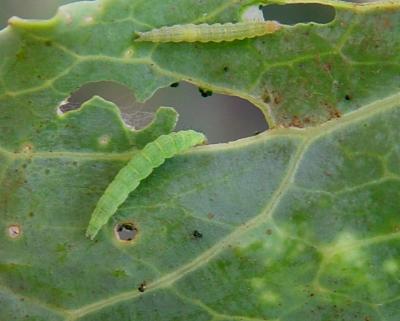
© A. M. Varela, icipe
|
Diamondback moth caterpillars feeding on kales
|
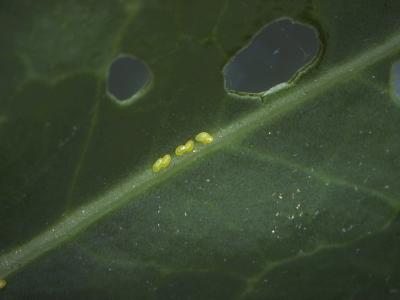
© F. Haas, icipe
|
Eggs of the diamondback moth
|
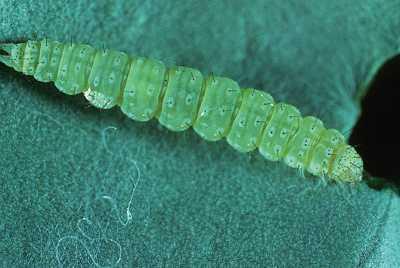
© C. Smart/NYSAES/Cornell University
|
Caterpillar of a diamondback moth feeding on leaf. A fully-grown caterpillar is about one cm long. Head capsule is pale to pale-greenish or pale-brown, mottled with brownish and black-brown spots.
|

© A.M. Varela, icipe
|
Diamondback moth - Young caterpillars and their damage on kale.
|

© Anne Bruntse, Biovision
|
Diamondback moth young larvae
|
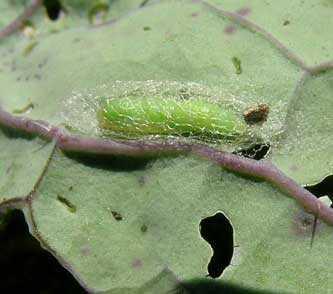
© MOFGA, Eric Sideman
|
Diamondback moth pupa is 5 to 6 mm long, about four times as long as the width. It is covered with a white silken cocoon. Initially pupa is pinkish-white to pinkish-yellow.
|
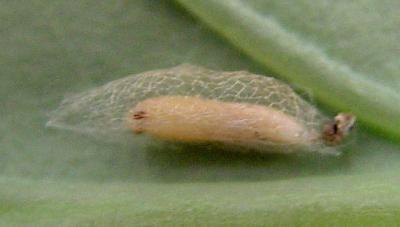
© A. M. Varela, icipe
|
Diamondback moth pupal colour changes to brown before adult emergence. The developing moth can be seen through the cocoon. The pupa is 5 to 6 mm long.
|
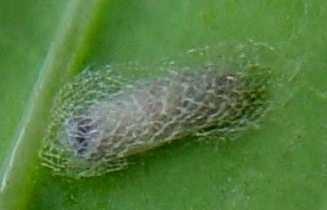
© A. M. Varela, icipe
|
Coccon of the parasitic wasp Diadegma semiclausum. The wasp larva spins a brown, rounded cocoon within the silk cocoon of diamondback moth.
|
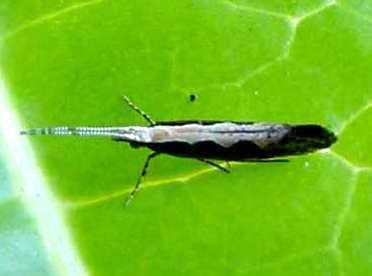
© A. M. Varela, icipe
|
Diamondback moth adult. The adult is greyish brown with a 9 mm long body and a wingspan of about 1.2 to 1.5 cm
|

© Alton N. Sparks, Jr., The University of Georgia, www.insectimages.org
|
Diamondback moth adult on cabbage leaf. The adult is greyish brown with a nine mm long body and a wingspan of about 1.2 to 1.5 cm
|
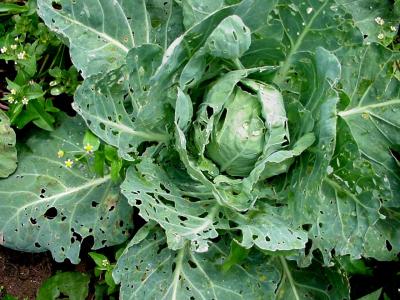
© A. M. Varela, icipe
|
Cabbage damaged by the diamondback moth. The caterpillar is a surface feeder and with its chewing mouth parts it feeds voraciously on the leaves leaving a papery epidermis intact. This type of damage gives the appearance of transluscent windows in the leaf blades. Caterpillars and in some cases pupae are found on the damaged leaves. In cases of severe infestation entire leaves could be lost.
|
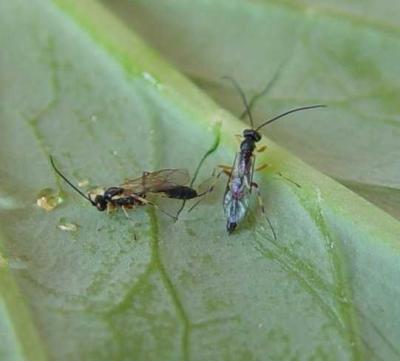
© A. M. Varela, icipe
|
Diamondback moth parasitoid (Diadegma semiclausum). This parasitic wasp was introduced and is now established in East Africa highlands.
|

© A. M. Varela, icipe
|
Diamondback moth parasitoid (Cotesia plutellae )
|
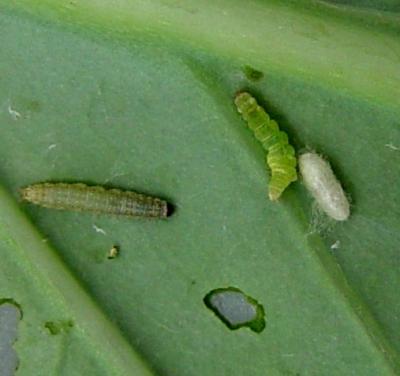
© A. M. Varela, icipe
|
Diamondback moth caterpillar parasitised by Cotesia plutella. Note silky cocoon of the parasitoid near dead DBM caterpillar. The wasp larva emerges from the caterpillar and spins a white cocoon from which the adult wasp emerges.
|

 Back
Back